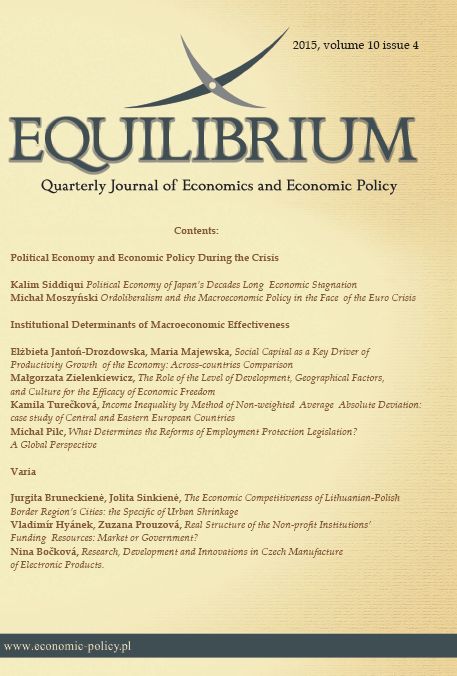Income Inequality by Method of Non-weighted Average Absolute Deviation: case study of Central and Eastern European Countries
Income Inequality by Method of Non-weighted Average Absolute Deviation: case study of Central and Eastern European Countries
Author(s): Kamila TurečkováSubject(s): Economy, National Economy
Published by: Instytut Badań Gospodarczych
Keywords: income inequality; index; comparison; method of non-weighted average absolute deviation
Summary/Abstract: The presented article uses the method of non-weighted average absolute deviation for expressing income inequality in 11 selected Central and Eastern European Countries. Specifically, the analysis of income inequality is done for Poland, the Czech Republic, the Slovak Republic, Austria, Slovenia, Hungary, Romania, Bulgaria, Latvia, Lithuania and Estonia. Based on the determination of income inequality in the article an analysis is made concerning the development of income inequality, including the subsequent inter-regional comparison in the context of the degree of income inequality in a given human society and economy. The text of this article is organized in 4 parts, after Introduction follows the analytic chapter where, primarily, the method of non-weighted average absolute deviation is explained. The third part contains the empirical analysis of income inequality, and the Conclusion highlights some major conclusions of detailed analysis made in Chapter 3. The analysis of income distribution of 11 European households between years 2005-2013 and its order is made in deciles basing on empirical data from the Statistics on Living Conditions and Welfare published by Eurostat.
Journal: Equilibrium. Quarterly Journal of Economics and Economic Policy
- Issue Year: 10/2015
- Issue No: 4
- Page Range: 99-110
- Page Count: 11
- Language: English

